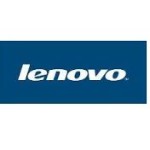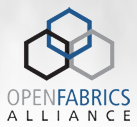Solving Navier-Sokes equations are popular because they describe the physics of in a number of areas of interest to scientists and engineers. By solving these equations, the flow velocity can be calculated, and then other quantities of interest, such as pressure or temperature may be determined.
Archives for March 2015
Video: Application Experiences on DDN’s IME Burst Buffer
“The DDN Infinite Memory Engine (IME) unleashes a new I/O provisioning paradigm. This breakthrough, software defined storage application introduces a whole new new tier of transparent, extendable, non-volatile memory (NVM), that provides game-changing latency reduction and greater bandwidth and IOPS performance for the next generation of performance hungry scientific, analytic and big data applications – all while offering significantly greater economic and operational efficiency than today’s traditional disk-based and all flash array storage approaches that are currently used to scale performance.”
Video: Increasing Cluster Throughput while Reducing Energy Consumption for GPU Workloads
“The use of GPUs to accelerate applications is mainstream nowadays, but their adoption in cur- rent clusters presents several drawbacks. In this talk we present the last developments of the rCUDA remote GPU virtualization framework, which is the only one supporting the most recent CUDA version, in addition to leverage the InfiniBand fabric for the sake of performance.”
Job of the Week: Senior HPC GRID Engineer at PDT Partners
The PDT team – a proprietary quantitative investment manager – is seeking a highly-talented senior HPC engineer. The Senior GRID Engineer will be a primary point of contact for the research teams using the GRID and will interface closely with the entire UNIX engineering group, senior software developers, vendors and the in-house monitoring team.
HPC and Software Modernization
“As we see Moore’s Law alive and well, more and more parallelism is introduced into all computing platforms and on all levels of integration and programming to achieve higher performance and energy efficiency. We will discuss Multi- and Many-Core solutions for highly parallel workloads with general purpose and energy efficient technologies. We will also touch on the challenges and opportunities for parallel programming models, methodologies and software tools to achieve highly efficient and highly productive parallel applications. At the end we will take a brief look towards Exascale computing.”
Lenovo Opens HPC Innovation Center in Stuttgart, Readies SuperMUC Phase 2
Today Lenovo announced the opening of the company’s first global HPC innovation center, offering a permanent R&D and application benchmarking site as well as a new ecosystem of partners that will collaborate on projects to bring the commercial benefits of HPC to a broader spectrum of clients and workloads.
Going from the Lab to the Data Center
In the late 1980s, genomic sequencing began to shift from wet lab work to a computationally intensive science; by end of the 1990s this trend was in full swing. The application of computer science and high performance computing (HPC) to these biological problems became the normal mode of operation for many molecular biologists.
Video: Slim Fly – A Cost Effective Low-Diameter Network Topology
“We introduce a high-performance cost-effective network topology called Slim Fly that approaches the theoretically optimal network diameter. Slim Fly is based on graphs that approximate the solution to the degree-diameter problem. We analyze Slim Fly and compare it to both traditional and state-of-the-art networks. Our analysis shows that Slim Fly has significant advantages over other topologies in latency, bandwidth, resiliency, cost, and power consumption.”
How Supercomputers Give Universities a Competitive Edge
In an NSF-funded study, a Clemson University team found that universities with locally available supercomputers were more efficient in producing research in critical fields than universities that lacked supercomputers.
Internet of Things & What it Means to Fabrics
In this video from the 2015 OFS Developer’s Workshop, Guy Ailee from Intel presents: Internet of Things & What it Means to Fabrics.










